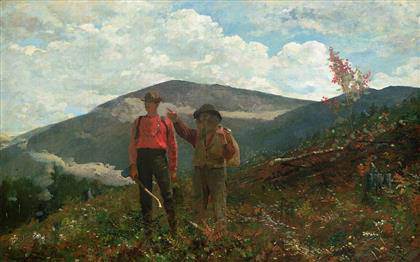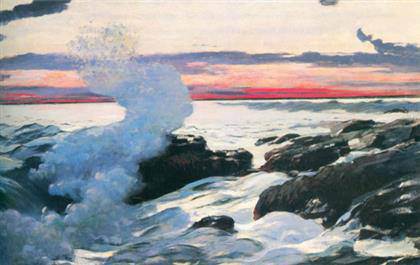
Winslow Homer
Two Guides, 1877
Sterling and Francine Clark Art Institute

Winslow Homer
West Point, Prout’s Neck, 1900
Sterling and Francine Clark Art Institute
Winslow Homer: Making Art, Making History The exhibition ‘Winslow Homer: Making Art, Making History’ explores the artist’s career with a special focus on his role in chronicling scenes of American life. Sterling and Francine Clark Art Institute, June 9 through September 8, 2013]]>
Source: Sterling and Francine Clark Art Institute
“Winslow Homer: Making Art, Making History” showcases some sixty oil paintings, watercolors, drawings, and etchings, as well as approximately 120 rarely seen wood engravings. Drawing upon the resources of the Clark’s own holdings of nearly 250 works by Homer (dating from 1857 to 1904), the exhibition provides a variety of distinctive perspectives on this important American artist.
The paintings in the Clark collection are recognized as being among Homer’s finest and offer insight into Homer’s thematic and technical development throughout his career. The presentation of “Undertow” (1886), along with six preparatory drawings accompanying it, gives an intimate look at the artist’s design process and offers insights into how Homer developed one of his most important figural works.
Among the best-known of the Clark paintings is “Two Guides” (1877), depicting two identifiable Adirondack guides in the wilderness. Another visitor favorite, “West Point, Prout’s Neck” (1900) was deemed by the artist in 1901 as “the best thing I have painted.” Panned by one New York critic who called it “simply the worst picture” in that year’s Society of American Artists exhibition, it is now considered by most art historians to be one of his greatest achievements.
Although rarely shown, the Clark’s watercolors by Homer are among the most popular and appealing works in the collection; they help illustrate not only the collecting priorities of founder Sterling Clark, but also the rise of the status of watercolors in the American art world. A group of etchings, heliotypes, and chromolithographs by or after Homer reveals the methods in which the artist used to make his art more accessible to the collecting public.
“Sterling Clark considered Winslow Homer one of the greatest artists of the nineteenth century,” said Michael Conforti, director of the Clark, noting that Clark purchased his first Homer painting in 1915 at a time when he was living in Paris and focusing on purchasing Italian Renaissance art.
Related content
Winslow Homer’s Legacy in Maine – Portland Museum of Art (exhibition, 2013)
Follow us on:


